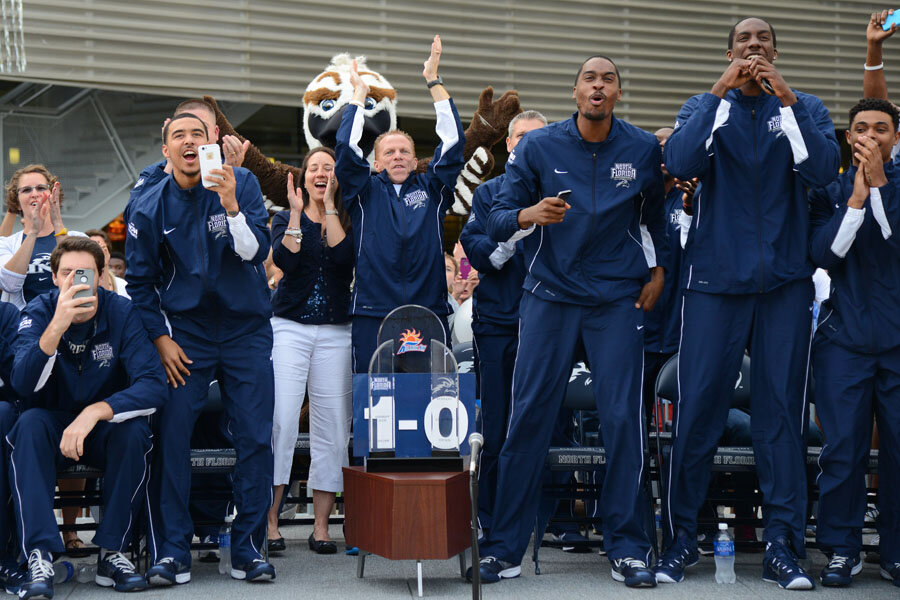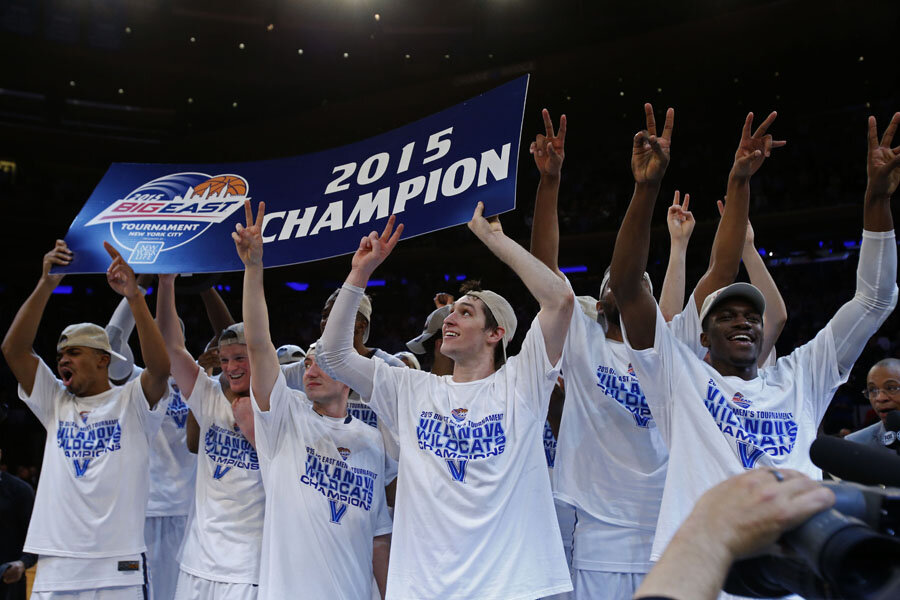Villanova
Did you know that 1940s Nova star Paul Arizin is credited with creating the jump shot and that he once scored 85 points in a game? Or that Villanova reached the 1971 Final against UCLA, but had to vacate the achievement because Howard Porter had signed a contract with the ABA’s Pittsburgh Condors?
Virginia
Did you know that Virginia fell short in the 1980s when 7 ft. 4 in Ralph Sampson played for the Cavaliers? Sampson won three straight Player of the Year awards but only led the Cavs to the Final Four once, in 1981, when they lost in the seminfinals.
Oklahoma
Did you know that the Sooners lost the 1988 NCAA Final to Kansas after beating the Jayhawks twice during the regular season?
Louisville
Did you know that the Cardinals are the only team to win the championships of three different tournaments: the NAIA in 1948, the NIT in 1956, and the NCAA in 1980, 1986, and 2013?
Northern Iowa
Did you know that the Panthers returned all five starters this season or that they have only sent one player on to the NBA, Jason Reece in 1990?
Providence College
Did you know that four Hall of Famers – Dave Gavitt, John Thompson, Lenny Wilkens, and Rick Pitino – either played or coached at Providence, and that alum Billy Donovan coached Florida to back-to-back NCAA titles in 2006 and 2007?
Michigan State
Did you know that the Spartans drew the largest crowd in college basketball history when they played the “Basketbowl” before 78,129 fans in Detroit’s Ford Field against Kentucky in 2003? Michigan State was also involved in the most-watched televised game in NCAA tourney history, the 1979 championship game that pitted Magic Johnson against Larry Bird, before 35.l million viewers.
North Carolina State
Did you know that in 1974, the Wolfpack won their first NCAA title by beating UCLA in double overtime in the semifinals, despite trailing seven points in the extra period, then defeated Marquette in the Final? In the latter game, Marquette coach Al McGuire was tossed in the first half after receiving two technical fouls.
Louisiana State
Did you know that LSU never played in the NCAA tournament when “Pistol” Pete Maravich was leading the nation in scoring three consecutive seasons, ending in 1969-70? He averaged 44.5 points per game his senior year?
Georgia
Did you know that Dominique Wilkins (“The Human Highlight Film”) is considered the greatest player in school history even though he never played in the NCAA tournament?
Boise State
Did you know that the Broncos must face Dayton on Dayton’s home court in one of the play-in games, and that the Flyers are 16-0 at home this season?
Dayton
Did you know that the Flyers, so named because of Ohio’s connections to flight history, had the nation’s winningest Division I basketball program during the 1950s and 1960s?
Wyoming
Did you know that the Cowboys won an NCAA championship in 1943 by beating Georgetown to complete a 31-2 season? Wyoming’s Ken Sailors was the national Player of the Year.
U. of California, Irvine
Did you know that besides having perhaps the most unusual nickname in this year’s tournament – Anteaters – UC-irvine is making its first-ever trip to the Big Dance? That thrills NBA Oklahoma City Thunder coach Scott Brooks, who played at the school and hosts an annual UCI invitational golf tournament each year.
University at Albany, SUNY (State University of New York)
Did you know that Albany’s Great Danes (formerly the Pedagogues) pulled out a dramatic 51-50 win in the America East tournament when Peter Hooley hit a 3-pointer with 1.6 seconds left? Albany had been down seven points with less than two minutes left. It was especially emotional for Hooley, who missed eight games this season after returning to Australia to be with his mother, who died following a long illness.
Belmont University
Did you know that the Bruins snapped Murray State’s 25-game winning streak, the nation’s second-longest after Kentucky’s, with a 88-87 victory in the Ohio Valley Conference final?
Lafayette College
Did you know that Fran O’Hanlon is in his 20th season as the Leopards’ head coach even though his overall record at the Easton, Pa., school is 290-307?






